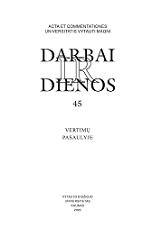Representation of Character in Translation. Helen Fielding's Bridget Jones’s diary
Representation of Character in Translation. Helen Fielding's Bridget Jones’s diary
Author(s): Irena RagaišienėSubject(s): Language and Literature Studies
Published by: Vytauto Didžiojo Universitetas
Keywords: Representation; Character; Translation; Helen; Fielding; bridget; Jones’s; Diary;
Summary/Abstract: Helen Fielding’s heroine, Bridget Jones, has proven to be among the most memorable female characters in recent English fiction. According to Amina Elbendary, “in her character Bridget Helen Fielding has created a startling parody of the life of a single woman, in this case one living in a big Western city, at the end of the twentieth century.” To a large extent, Elbendary holds, the book’s success is conditioned by the fact that many readers take delight in the impression of “how true to life Bridget sounds, and how true the [novel rings]” (Elbendary). Recreating the enduring attraction of the sound and ring of the original, without any doubt, is the goal of the translator. In Walter Benjamin’s often quoted phrase, “The task of the translator consists in finding that intended effect [Intention] upon the language into which he is translating which produces in it the echo of the original” (Benjamin 1973: 76).
Journal: Darbai ir dienos
- Issue Year: 2006
- Issue No: 45
- Page Range: 171-186
- Page Count: 1
- Language: English

